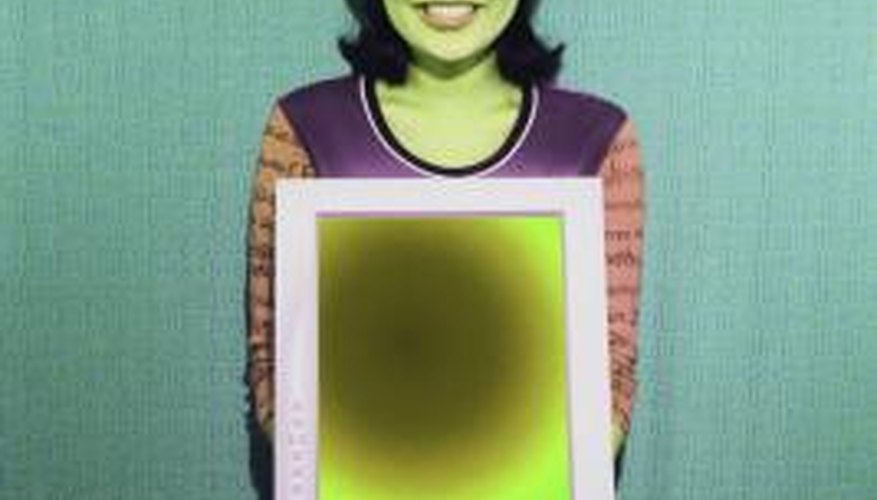LCD -- short for liquid crystal display -- technology is used in a wide variety of electronic devices. Everything from computer screens to television sets uses this technology, which creates images by passing light through a series of liquid crystals. If you apply too much pressure to one of these sensitive screens, it may suffer permanent damage.
How Damage Occurs
An LCD screen is a layer of liquid crystals sandwiched between two sheets of glass. Because of this construction, the screen -- both the glass and the crystals -- are fragile and vulnerable to damage. LCDs have a rod-like molecular structure, and possess traits similar to both liquids and crystals, hence their name. When you apply too much pressure to these crystals, whether intentionally or accidentally, you can disrupt not only the physical composition of the crystals, but also their orientation between the layers of glass. This can lead to a permanent pressure mark.
- An LCD screen is a layer of liquid crystals sandwiched between two sheets of glass.
- When you apply too much pressure to these crystals, whether intentionally or accidentally, you can disrupt not only the physical composition of the crystals, but also their orientation between the layers of glass.
What Pressure Damage Looks Like
Pressure damage can take on different appearances based on the type of LCD screen on your device, as well as the amount of pressure applied. For example, an LCD screen that only produces black or white -- such as one found on a washing machine -- will show pixelated damage in only those colours; however, a full-colour LCD screen on a television will show damage in all colours. Damage to these full-colour screens is generally less obvious when the screen is completely black or completely white; rather, it's most visible when there are many colours on the screen at once. Instead of a pixelated appearance, the damage may also take on the look of shadows on the screen or look like a bruise. The more pressure you apply, the more severe the damage will be.
- Pressure damage can take on different appearances based on the type of LCD screen on your device, as well as the amount of pressure applied.
- Instead of a pixelated appearance, the damage may also take on the look of shadows on the screen or look like a bruise.
How To Fix The Damage
Unfortunately, there is no way to repair pressure damage to an LCD screen. Many manufacturers -- including Toshiba -- do not include pressure damage under their product warranties, meaning if your LCD screen suffers this kind of damage, you'll have to pay for a replacement out of your own pocket.
Avoiding Pressure Damage
Pressure damage usually happens by accident when transporting or cleaning an LCD screen. To avoid this type of damage, use extreme caution whenever moving a screen. If your screen is on a laptop, always place it in its carrying case when not in use. If your LCD screen is larger, like a television, try to avoid touching the LCD surface altogether during transport.
- Pressure damage usually happens by accident when transporting or cleaning an LCD screen.
- To avoid this type of damage, use extreme caution whenever moving a screen.
When cleaning an LCD screen, use a combination of water and isopropyl alcohol or vinegar. Harsher chemical cleaners can damage the screen. Never apply the solution directly to the LCD monitor; instead, apply it first to a soft cotton cloth. Gently wipe the screen in one direction. If you come across a spot that is harder to clean, resist the temptation to apply pressure. Instead, continue wiping the screen in one direction -- preferably from top to bottom -- until the spot comes off.
If you store your LCD, make sure never to place anything on top of the screen. Even light objects can, over time, apply enough pressure to leave a permanent mark on your screen.
